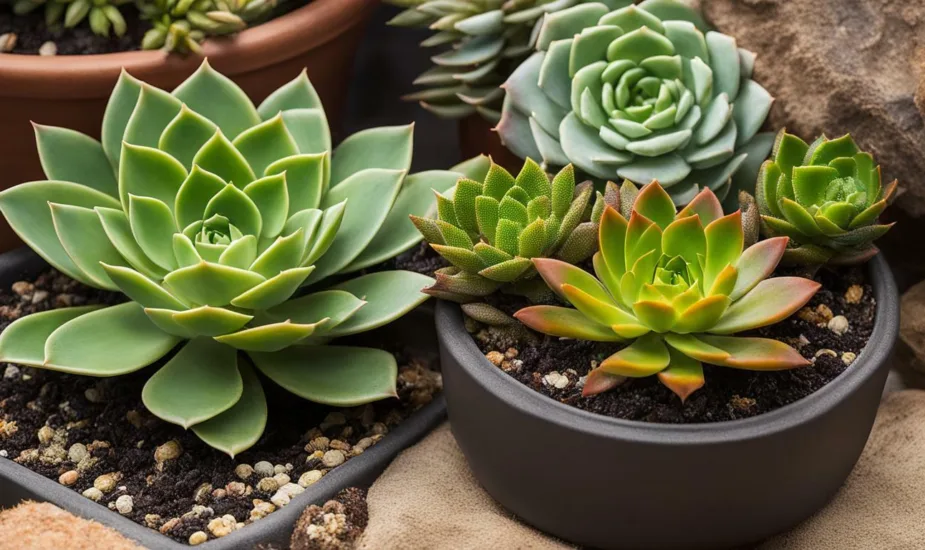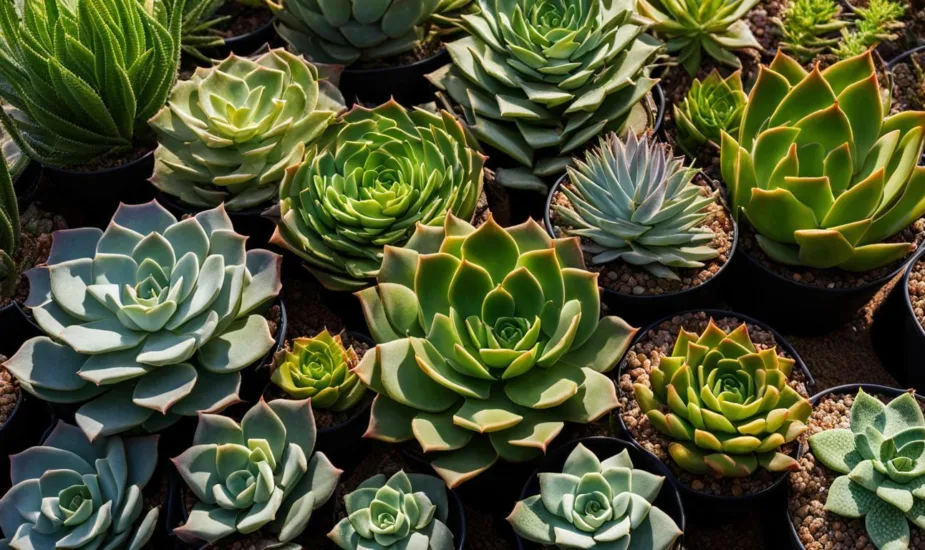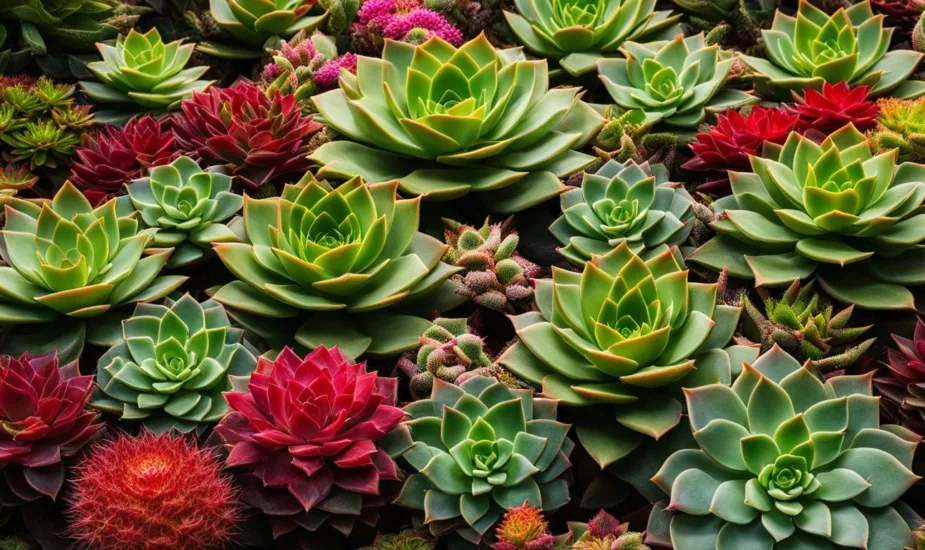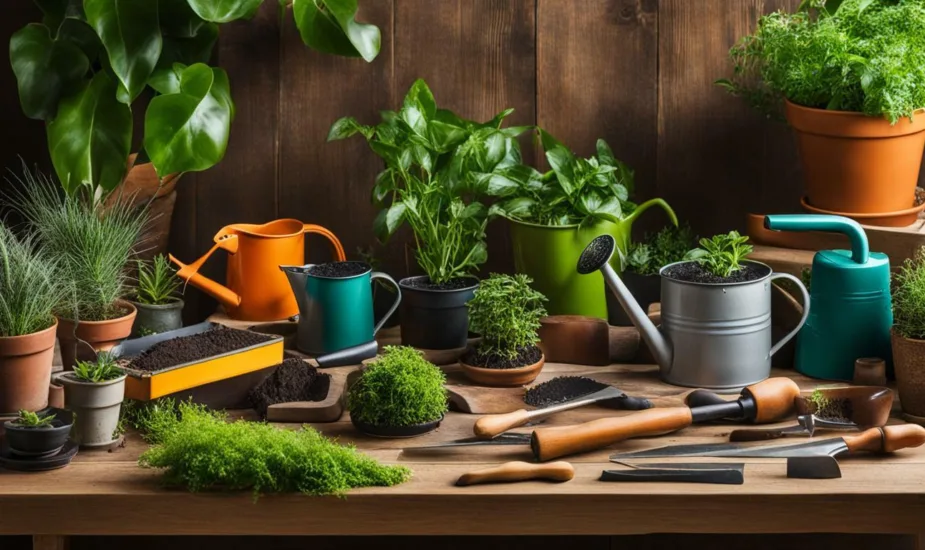Growing Sunflowers in Pots: A Step-by-Step Beginner’s Guide
Passionate about sunflowers, I find joy in planting them in pots. Their vibrant beauty never fails to captivate me. Join me on this journey of cultivating sunlit wonders in containers

If you’re interested in adding some sunny charm to your small space or balcony garden, growing sunflowers in pots might be just the thing you need. Despite their reputation as towering giants, sunflowers are surprisingly adaptable to container gardening, and with the right care and attention, you can enjoy their vibrant colors and cheerful faces throughout the growing season.
In this step-by-step guide, I’ll take you through all the essential aspects of growing sunflowers in pots, from selecting the right varieties and containers to soil preparation, planting, and maintenance. Whether you’re a novice gardener or a seasoned green thumb looking for a new challenge, this guide will equip you with the knowledge and skills to cultivate beautiful sunflowers in small spaces.
Key Takeaways:
- Growing sunflowers in pots is a great way to add some color and beauty to your small space garden.
- With the right varieties and containers, sunflowers can thrive in containers just like in garden beds.
- Choosing the right soil, providing adequate sunlight, and watering and fertilizing regularly are key to success.
- Pruning, deadheading, and protecting from pests and diseases are all important aspects of sunflower care for container planting.
Benefits of Growing Sunflowers in Pots

If you are new to gardening or live in an apartment or a house with limited outdoor space, you might think that growing sunflowers is out of reach. However, with the help of pots and containers, you can enjoy the beauty and benefits of sunflowers even in small spaces.
Here are some advantages of growing sunflowers in pots:
| Advantage | Description |
|---|---|
| Versatility | The portability of potted sunflowers allows you to move them around your space to find optimal sunlight and even bring them indoors during inclement weather. |
| Space-Efficient | Sunflowers can grow quite tall, posing a challenge for gardeners with limited space. By confining them to pots, you can grow sunflowers vertically, maximizing your available space. |
| Easy Care | Sunflowers are low-maintenance plants that require minimal watering and fertilization. Potted sunflowers are also less susceptible to diseases and pests that thrive in garden soil. |
| Aesthetic Appeal | Sunflowers are well-known for their showy, vibrant blooms that add color and character to any space. With a variety of pot and sunflower seed options, the possibilities for visual appeal are endless. |
If you are interested in growing sunflowers in pots, keep reading to learn about the best sunflower varieties for pot cultivation, how to select the right containers and potting soil, and tips on planting, caring, and harvesting sunflowers.
Choosing the Right Sunflower Varieties for Pots
When it comes to growing sunflowers in pots, selecting the right variety is key to success. Not all sunflowers are suitable for container gardening, but there are several options that are known for their compact size, manageable growth habit, and pollinator-friendly qualities.
Petite Sunflower Varieties
Petite sunflower varieties are ideal for growing in pots because they have shorter stems and smaller flower heads. These varieties can grow up to 2-3 feet tall, making them perfect for small spaces. Some popular petite sunflower varieties include the Soraya, Sundance Kid, and Elf.
| Sunflower Variety | Height (inches) | Flower Size (inches) |
|---|---|---|
| Soraya | 24-36 | 3-5 |
| Sundance Kid | 24-30 | 4-6 |
| Elf | 16-24 | 2-4 |
Dwarf Sunflower Varieties
Dwarf sunflower varieties are another great option for container gardening. These sunflowers typically have shorter stems and smaller flower heads, making them perfect for pots and planters. Dwarf sunflower varieties include Pacino, Sunsation, and Yellow Pygmy.
| Sunflower Variety | Height (inches) | Flower Size (inches) |
|---|---|---|
| Pacino | 12-18 | 2-3 |
| Sunsation | 18-24 | 4-6 |
| Yellow Pygmy | 24-30 | 3-5 |
Multi-Branching Sunflower Varieties
Multi-branching sunflower varieties produce multiple flower heads on one plant, making them a great option for container gardening. These varieties can grow up to 3-4 feet tall and include Lemon Queen, Italian White, and Primrose.
| Sunflower Variety | Height (inches) | Flower Size (inches) |
|---|---|---|
| Lemon Queen | 36-48 | 3-5 |
| Italian White | 36-48 | 4-6 |
| Primrose | 36-48 | 3-4 |
When selecting sunflower varieties for container gardening, it’s important to consider factors like height, growth habit, and pollinator-friendly qualities. With the right sunflower varieties, you can enjoy the beauty of these stunning flowers even in small spaces.
Selecting the Right Containers for Sunflowers

Choosing the right containers for potted sunflowers is crucial for their successful growth and health. As sunflowers are known for their extensive root system and tall stems, it’s essential to choose containers that provide enough space and stability.
Pots and planters made of clay, ceramic, plastic, or metal are all suitable for growing sunflowers, as long as they have proper drainage holes. Additionally, the size of the container should be proportional to the size of the sunflower variety, with at least 12-inch depth and diameter for most types.
If you’re growing sunflowers in buckets, make sure they are made of UV-resistant plastic and drilled with drainage holes to avoid waterlogging. You can also upcycle old containers, such as wheelbarrows, baskets, or even old shoes, as long as they meet the above criteria.
Before planting, prepare your containers by filling them with high-quality potting soil, leaving about two inches of space from the rim to prevent overflow when watering. To add visual interest, you can also mix in some compost or sand to the soil, or decorate the exterior of the container with paint or stickers.
Getting Started with Potting Soil

When it comes to growing sunflowers in pots, selecting the right potting soil is essential for healthy plant growth. The ideal potting soil should be well-draining, provide sufficient nutrients, and maintain moisture levels without becoming waterlogged. Here are some factors to consider when choosing potting soil for your potted sunflowers:
- Moisture retention: A good potting soil should have high water retention, allowing the plant roots to absorb moisture as needed.
- Nutrient content: Potted sunflowers rely on soil for nutrients, so it’s crucial to choose a potting mix that contains adequate fertilizer.
- pH levels: Soil pH can impact plant growth and development. Aim for a neutral to slightly acidic pH for sunflowers, typically between 6.0 to 7.5.
It’s worth noting that some potting soils come pre-mixed with organic materials like compost or vermiculite, which can provide additional benefits like better drainage and aeration.
When filling your pot, add a layer of small rocks or gravel at the bottom of the container to improve drainage and prevent waterlogging. Fill the pot with potting soil, leaving about an inch of space at the top to allow for easy watering.
Remember to check the soil’s moisture level regularly by sticking a finger about an inch into the soil. If it feels dry, it’s time to water your sunflowers.
Planting Sunflowers in Pots
Now that you have selected your sunflower varieties and containers, it’s time to start planting! Whether you are using seeds or seedlings, the basic principles of planting sunflowers in pots are the same. Follow these step-by-step instructions to ensure your sunflowers have the best chance of thriving:
- Choose the right pot size: Before planting, make sure your pot is at least 12 inches deep and wide, and has drainage holes at the bottom to avoid waterlogging. This size will provide enough room for the roots to grow and support the tall stems.
- Fill the pot with potting soil: Use a high-quality potting mix that is rich in nutrients and has good drainage to ensure proper aeration and moisture retention. Fill the pot about two-thirds full with soil, leaving enough room to accommodate the seedling or seeds.
- Plant the seed or seedling: For seeds, make a small hole in the soil about 1 inch deep, drop the seed in, and cover it with soil. For seedlings, gently loosen the root ball and place it in the center of the pot, making sure the soil level is even with the top of the root ball.
- Water gently: After planting, give the soil a good drink of water, being careful not to overwater. Keep the soil moist but not waterlogged, as too much water can lead to root rot and other issues.
- Provide support: As the sunflowers grow taller, they may need additional support to prevent bending or snapping. Use bamboo stakes or trellises to anchor the stems and keep them upright.
- Thin out seedlings: If you are planting multiple seeds in one pot, you may need to thin out the weaker seedlings to prevent overcrowding and promote healthy growth.
- Space them out: For optimal growth, make sure to space out the sunflowers so they are not too close together in the pot. This will help ensure adequate air circulation and prevent disease and pest problems.
- Provide adequate sunlight: Place your potted sunflowers in a sunny location where they can get at least 6 hours of direct sunlight per day. Rotate the pots occasionally to ensure each side of the plant gets even exposure.
With proper planting techniques, your sunflowers are on their way to becoming beautiful and healthy plants in your container garden!
Providing Adequate Sunlight

As with any plant, sunflowers need adequate sunlight to thrive. When growing sunflowers in pots, it’s important to position them in an area that receives at least six hours of direct sunlight per day.
If you have a balcony or patio, place your sunflower pots in an unobstructed area that receives the most sunlight throughout the day. Alternatively, you can move the pots around as the sun changes position, ensuring that all sides of the plant receive an even amount of light.
Remember that sunflowers track the sun as it moves across the sky, so be sure to account for this when positioning your pots. By providing ample sunlight, your sunflowers will grow strong and healthy.
Watering and Fertilizing Sunflowers in Pots
One of the essential aspects of growing sunflowers in pots is ensuring they receive adequate water and nutrients. The amount of water and fertilizer required will depend on factors like the size of the pot, the type of soil used, and the stage of plant growth.
Watering: Sunflowers in pots need consistent, but not excessive, moisture to thrive. As a general guideline, water the plants when the top inch of soil feels dry to the touch. Be sure to water deeply, allowing excess water to drain out of the pot’s bottom holes. Avoid splashing water on the leaves, as this can increase the risk of fungal diseases.
Fertilizing: Sunflowers are heavy feeders and will benefit from regular fertilization during the growing season. Use a balanced fertilizer with equal parts of nitrogen, phosphorus, and potassium, following the package instructions for application rates. Alternatively, you can use organic fertilizers like compost or manure tea, which provide slow-release nutrients to the soil.
It’s important to note that too much fertilizer can harm sunflowers, causing excessive foliage growth at the expense of flowers or even burning the roots. Therefore, it’s crucial to follow the recommended dosage and not exceed it.
Supporting Tall Sunflower Stems

When growing sunflowers in pots, it’s important to provide support for tall stems to prevent them from bending or breaking. One simple method to support sunflower stems is to insert bamboo stakes or trellises into the soil near the plants. As the sunflowers grow, gently tie them to the stakes or trellises using soft plant ties or twine.
If you’re using a trellis, make sure to position it at the back of the pot to avoid blocking sunlight from reaching the sunflowers. Additionally, avoid using stakes or trellises made of materials that could harm the sunflowers or rust over time, like metal or wire.
If you’re planning to grow multiple sunflowers in the same pot, make sure to provide enough space between plants to prevent overcrowding and competition for nutrients and sunlight. Generally, a spacing of about 6-12 inches between plants is recommended depending on the specific variety.
Dealing with Pests and Diseases

As with any plants, sunflowers in pots may be susceptible to pests and diseases that can affect their growth and overall health. Here are some common issues to watch for and ways to control or prevent them:
| Pests | Symptoms | Treatment |
|---|---|---|
| Aphids | Stunted growth, curled leaves, sticky residue on leaves | Spray with insecticidal soap or diluted neem oil. Encourage natural predators such as ladybugs. |
| Cutworms | Cut or chewed stems, wilting | Place collars around stems or sprinkle diatomaceous earth around plants. Control with pheromone traps or insecticides. |
| Spider mites | Yellowing leaves, fine webbing on foliage | Spray with water or insecticidal soap. Increase humidity around plants by misting or placing a tray of water nearby. |
Some common diseases that can affect sunflowers include powdery mildew, downy mildew, and rust. These fungal diseases can cause leaves to yellow and wilt, and may spread rapidly in humid conditions. To prevent or control these issues:
- Remove affected leaves or plants promptly.
- Avoid wetting foliage when watering and ensure adequate air circulation around plants.
- Treat with a fungicide as directed.
- Consider planting disease-resistant varieties.
By monitoring your sunflowers regularly and taking steps to control pests and diseases, you can help ensure a healthy and thriving container garden.
Pruning and Deadheading Sunflowers
Pruning and deadheading sunflowers in pots is essential to keep the plants healthy and promote longer blooming periods. By cutting off spent blooms and removing damaged or diseased leaves, you encourage the plant to put more energy into producing new flowers instead of wasting it on seed production. Pruning also helps to prevent the plant from becoming top-heavy and falling over, especially if you grow tall varieties in small pots.
When deadheading sunflowers, make sure to cut the stem just above the first set of leaves below the flower, using sharp, clean garden shears or scissors. This way, you prevent any damage to the stem or new buds that may be forming. You can repeat this process throughout the growing season, as new blooms appear.
While pruning sunflowers isn’t necessary, it can help to control their size and shape, especially if you have limited space. You can clip back the top of the stem when the plant reaches about half of its desired height, to make it branch out and produce more flowers. However, be careful not to over-prune, as this can weaken the plant and stunt its growth.
Remember to wear gloves and avoid touching your face or eyes while pruning sunflowers, as their sap can be irritating to some people. Also, dispose of any cuttings and dead plant material in a sealed trash bag to prevent the spread of pests or diseases.
“Pruning and deadheading sunflowers in pots is essential to keep the plants healthy and promote longer blooming periods.”
Harvesting Sunflower Seeds

Harvesting sunflower seeds is a thrilling experience for any gardener, and it’s easy to do so with potted sunflowers. Once the flowers have faded and the back of the heads turn yellow-brown, it’s time to harvest the seeds. The seeds will drop easily when they are mature, so be sure to collect them before they fall to the ground or are eaten by birds.
To harvest the seeds, cut the head from the stem with a pair of scissors or pruners, leaving a few inches of stem attached. You can also leave the head on the plant until it dries and the seeds are fully mature and easier to remove. To extract the seeds, rub the head gently over a screen or use your fingers to pluck them out one by one. If you want to use the seeds for snacking or baking, be sure to rinse them thoroughly and roast them in the oven to bring out their nutty flavor.
Another way to harvest seeds is to cover the heads with a breathable cloth or paper bag before they ripen, to protect them from birds or insects. The covering will collect the seeds as they fall, making them easy to collect and store.
Troubleshooting Common Sunflower Issues

While sunflowers are relatively low maintenance, they can still be susceptible to various issues, especially when grown in pots. Here are some common problems and solutions:
Yellowing leaves
If the leaves of your sunflower start turning yellow, it could be a sign of overwatering or poor drainage. Check that your pot has drainage holes and that the soil is not waterlogged. Allow the soil to dry out a bit before watering again, and avoid getting water on the leaves.
Stunted growth
If your sunflower appears stunted or is not growing as quickly as expected, it may need more sunlight. Make sure the pot is in a spot that receives at least 6 hours of direct sunlight per day. It could also be due to nutrient deficiencies, so consider fertilizing with a balanced fertilizer.
Wilted or drooping leaves
If your sunflower’s leaves start to wilt or droop, it may be due to underwatering or heat stress. Make sure the soil is evenly moist and consider moving the pot to a shadier spot during the hottest parts of the day.
Small or no flowers
If your sunflower isn’t producing flowers or the flowers are smaller than expected, it may not be getting enough sunlight or nutrients. Make sure the pot is in a sunny spot and consider fertilizing with a fertilizer high in phosphorus, which promotes flower production.
Pests and diseases
Sunflowers can be susceptible to aphids, slugs, and fungal diseases like powdery mildew. Consider using insecticidal soap or diatomaceous earth to control pests, and remove any infected leaves or flowers to prevent the spread of disease.
By addressing these common issues promptly, you can help your potted sunflowers grow healthy and strong, providing a beautiful addition to your indoor or outdoor space.
Overwintering Sunflowers in Pots
As the winter season approaches, it’s important to start thinking about how to protect your sunflowers in pots from frost or other harsh weather conditions. Here are some tips to help your sunflowers survive the winter:
- Choose cold-hardy varieties: Before planting sunflowers in pots, consider selecting varieties that are known to be more resistant to cold temperatures. Some options to consider include ‘Italian White,’ ‘Ring of Fire,’ and ‘Lemon Queen.’
- Bring plants indoors: If you have the option to bring your potted sunflowers inside, this can be a great way to protect them from frost and cold winds. Just be sure to place them near a bright window and water them sparingly during winter dormancy.
- Wrap pots with insulation: If bringing your sunflowers indoors is not an option, you can wrap the pot in insulation material to help regulate the temperature. Bubble wrap, burlap, or blankets can be effective options.
- Water sparingly: During the winter, sunflowers in pots require less water than they do during the growing season. Be sure to check the soil moisture regularly and only water when it feels dry to the touch.
- Protect from wind: Wind can be a major issue for sunflowers in pots, as it can cause them to topple over and break. Consider placing a windbreak around your plants, such as a fence or wall, to prevent this from happening.
With proper care and attention, sunflowers in pots can survive the winter and come back even stronger in the spring. By following these tips, you can enjoy the beauty of your sunflowers year after year!
Conclusion

In conclusion, growing sunflowers in pots is a fun and rewarding project for beginner and experienced gardeners alike. With the right selection of sunflower varieties, containers, potting soil, and care techniques, you can enjoy the beauty and benefits of sunflowers even in small spaces like balconies or patios.
Remember to provide adequate sunlight, water, and nutrients for your potted sunflowers, and to keep an eye out for pests, diseases, and other issues that may arise. By pruning, deadheading, and supporting your sunflowers as needed, you can help them reach their fullest potential and enjoy a longer blooming season.
If you have any questions or concerns about growing sunflowers in pots, don’t hesitate to reach out to your local gardening center or community for advice.
Happy gardening! 🌻
FAQ
Q: What are the benefits of growing sunflowers in pots?
A: Growing sunflowers in pots offers versatility in small spaces and the ability to move them for optimal sunlight.
Q: How do I choose the right sunflower varieties for pots?
A: Consider factors like height, growth habit, and pollinator-friendly qualities when selecting sunflower varieties for pot cultivation.
Q: What types of containers are suitable for growing sunflowers?
A: Pots, planters, and buckets can be used as containers for growing sunflowers. Ensure proper drainage and consider size requirements.
Q: What kind of potting soil should I use for sunflowers?
A: Select potting soil that retains moisture, has adequate nutrient content, and suitable pH levels for optimal sunflower growth.
Q: How do I plant sunflowers in pots?
A: Follow step-by-step instructions on spacing, depth, and watering techniques when planting sunflower seeds or seedlings in pots.
Q: How can I provide adequate sunlight for sunflowers in pots?
A: Position pots to maximize sun exposure, especially in balconies and patios where sunlight may be limited.
Q: How often should I water and fertilize sunflowers in pots?
A: Follow guidelines for watering frequency, amount, and consider using organic or synthetic fertilizers to meet sunflower care needs in pots.
Q: How can I support tall sunflower stems in pots?
A: Use bamboo stakes or trellises to support tall sunflower stems, preventing bending or snapping.
Q: How can I deal with pests and diseases affecting sunflowers in pots?
A: Learn about common pests and diseases, and use natural or chemical control methods to prevent or control infestations.
Q: Why is pruning and deadheading important for sunflowers in pots?
A: Pruning and deadheading sunflowers promote healthy growth, prolong flowering, and prevent seed production.
Q: When and how do I harvest sunflower seeds from potted plants?
A: Follow proper harvesting techniques, including drying and storing methods, to harvest sunflower seeds from potted plants.
Q: What should I do if I encounter common sunflower issues in pots?
A: Identify common issues like yellowing leaves, stunted growth, or wilting, and explore possible causes and solutions.
Q: How do I overwinter sunflowers in pots?
A: Consider options for protecting sunflowers from frost or moving them indoors during colder seasons for successful overwintering in pots.
 Little Garden Tips
Little Garden Tips












